When it comes to luxury goods, one question that many men likely ponder at some point is this: Can I have my cake and eat it, too? That is to say, wouldn’t it be awesome if you could justify spending money on something you really want, enjoy it for decades, and build wealth at the same time, eventually selling it for a profit? With this in mind, we’re tackling whether “investment watches” are a real thing, and if so, what models you might consider.
Before we continue, I should note that I’m not an investment advisor; if you want investment advice, get a licensed advisor. We are, on the other hand, classic style connoisseurs and watches have been part of the classic style world for many decades.
In recent years, watches have become particularly popular with millennials because when buying a home seems utterly out of reach, you can still reward yourself for a loved one with a nice luxury timepiece. Whether it’s a good thing or a bad thing is something I’ll leave up to you but it’s definitely a thing that’s happening right now. Further, the concept of investment watches is not new. Rolex sports watches, Audemars Piguet (notably the Royal Oak,) and watches from Patek Philippe are known to hold or increase their value over time.
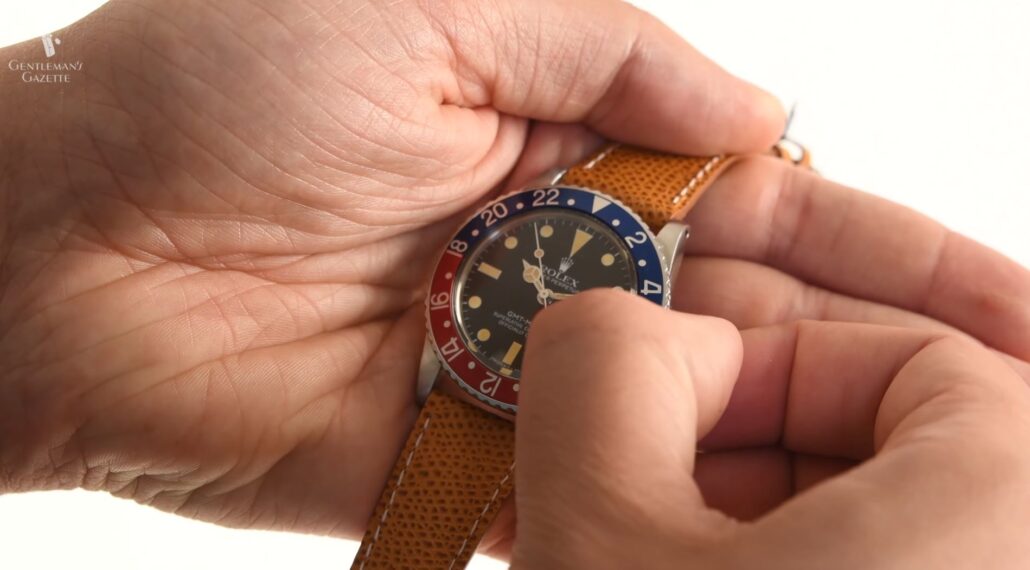
In a list of the 100 most expensive timepieces ever sold at auction, only 17 of them were not Patek Philippe. Without a doubt, these were very special watches, but does investing also work with more widely available watches rather than let’s say Paul Newman’s Daytona or the Patek Philippe of the emperor of Ethiopia?
What We Mean By “Investment”
It’s a term that is widely used but at its core, it means that you buy something with the intention to get a higher return in the future. Sometimes though, people talk about investing when they buy something that simply makes them feel good.
If you just quickly search on Youtube, you’ll find a bunch of videos that’ll tell you watches are a great investment. And I agree with them because sometimes I really want to show off what a baller I am with all my Rolex watches. All jokes aside, yes, if you’re rich and you can afford the rare collectible Patek Philippes and hold on to them and sell them at a later point in time, investing in watches is probably a good idea.
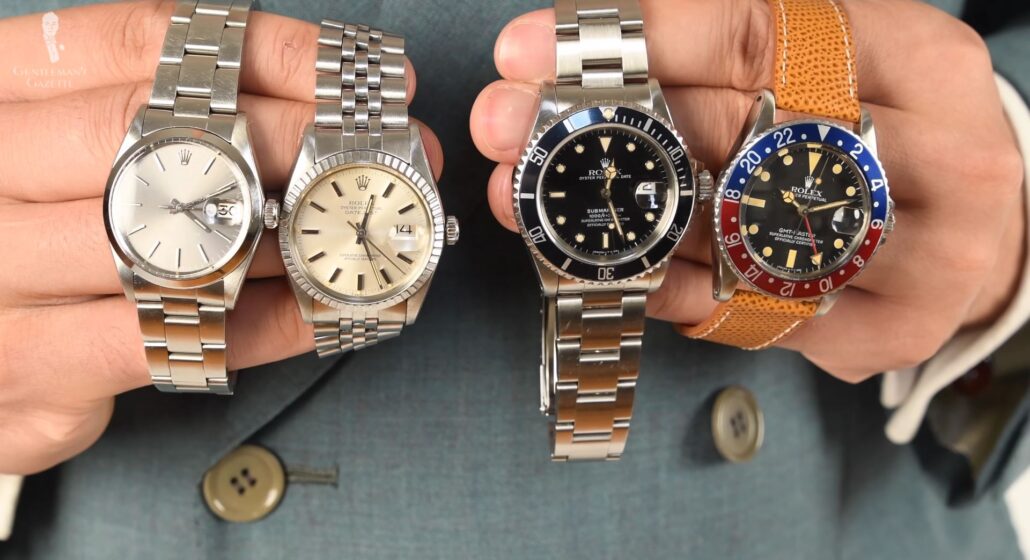
This concept is not limited to the watch market. Just think about rare instruments such as the ones from Stradivarius or cars. If you bought a McLaren F1 in the 90s originally for $1 million, you can turn around and sell today for $15 million. That’s an awesome return. And there are many other cars, for example, the Ferrari 288 GTO or the Mercedes SLR Sterling Moss, all increased significantly in value.
For a Fiat 500, a Cadillac Escalade or Mercedes S Class, it’s probably not gonna work the same way. Why? Well at the base, it’s a numbers game. The highest prices usually are realized by things that are very rare and limited. Most people will never be able to afford them and that’s the very reason they fetch such high prices–because they’re exclusive.
7 Underlying Concepts of Investing In Watches
The big question is not “Are watches a good investment?”, but “Are there investment watches that you can afford?” Let’s start by digging into the 7 underlying concepts of investing in watches and then let’s look at some specifics.
1. Make Sure You Can Afford It
First of all, you must have the money to participate in such a high priced world. For example, if you buy a new Rolex Daytona, a Calatrava from Patek Philippe and a Royal Oak, you’ll probably have to estimate to pay around 60 grand.
![Royal Oak Some of the Royal Oak variants by Audemars Piguet [Image Credit: Audemars Piguet]](https://www.gentlemansgazette.com/wp-content/uploads/2022/08/royal-oak-1030x579.jpg)
2. Make Sure You Don’t Need The Profit Immediately
Once you’ve invested your money, you make sure you don’t really need the money immediately and you can wait until the price rises to a point where you feel comfortable selling.
3. Knowledge of The Watch Market Is Necessary
No one can predict the future so you’ll have to sit back and see how the market develops and when is the right time to sell. Often, when you need to sell something it’s very hard to realize the true market value if there is not a standardized market, like the stock market for example.
You better have specialized knowledge about watches because even though a model may not change much from Rolex, there are certain details that make it much more valuable to collectors and certain colors and special things that are very very important. Unlike with stock, for example, where one stock from Tesla is exactly worth the same as another stock from Tesla.
4. Investment Is About Increasing (Not Maintaining) Value
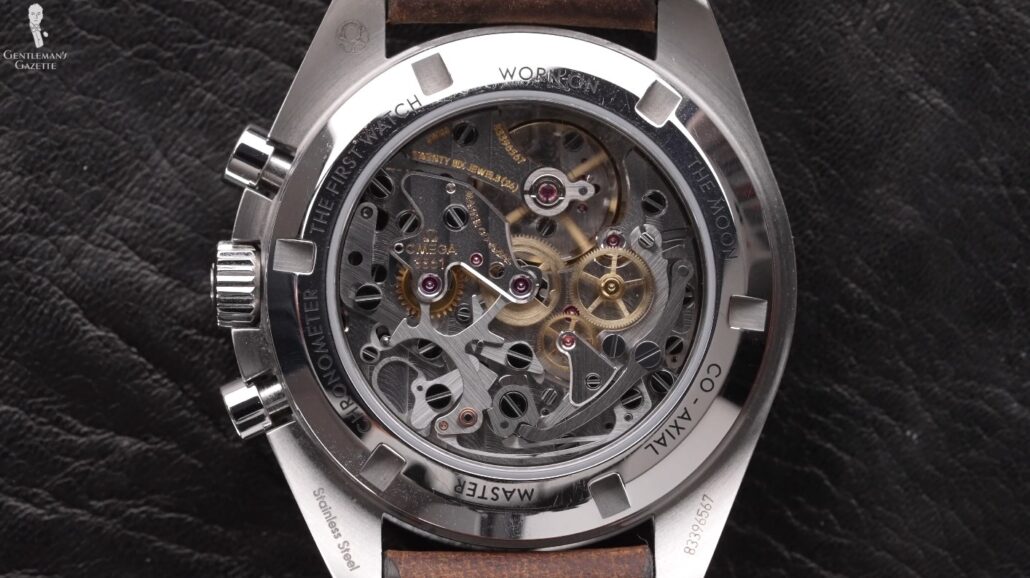
You have to believe that watches don’t just retain their value but that they will grow in the future. In the 1970s, the Swiss watch market was close to extinction because of the introduction of the quartz movement which made it seem that mechanical movements became unnecessary and outdated.
Of course, they turned it around by making mechanical watches a luxury good and focusing on the craftsmanship. Certain companies like Rolex or the trinity of watchmaking really became powerful brands but the question is, “Will the kings of today be the kings of tomorrow?” It looks like it but you’ll never know for sure.
5. The Market Will React
You have to assume that the market will act as you predict it or as it has in the past. These are really the only two things you can go off but in all truth, this is true for any kind of investment and not just for watches.
![Pp Watches Patek Philippe understands how to maintain the worth and rarity of their watches. [Image Credit: Patek Philippe]](https://www.gentlemansgazette.com/wp-content/uploads/2022/08/PP-watches-1030x579.jpg)
Again, past behavior is no guarantee for future success and Patek Philippe is really expensive today; It may not be tomorrow, even though the chances are very slim because they understand in order to retain their value, they have to keep it exclusive and not just flood the market with $300 Patek Philippe watches. It’s all about keeping that brand cachet very high and unattainable for the average Joe.
6. Don’t Get Too Attached & Be Ready To Sell
You have to be willing to sell the watch at the right point in time and you can’t really get attached to it or sentimental about it, otherwise, you may sell it at the wrong point in time. After all, you only make money with an investment if you sell it at the right time.
7. Be Open To Selling Without An Organized Marketplace
You also have to be able to sell your watches at a specific point in time to a certain buyer without an organized marketplace such as the stock market. Of course, you could argue there’s tons of market places like Chrono24, Bob’s Watches or even eBay but the rates really fluctuate and it’s not the same as the stock market where you can just decide at any point in time to just buy and sell.
![Vlcsnap Error663 The secondhand watch market is spread over a series of websites such as Bob’s Watches. [Image Credit: Bob's Watches]](https://www.gentlemansgazette.com/wp-content/uploads/2020/08/vlcsnap-error663-1030x584.jpg)
Sure you can check out the prices on those second-hand platforms but just because there’s a list price that they have for their used watches, doesn’t mean that it’s actually something that you realize or that you end up with if you subtract all the fees involved. So, in order to successfully buy and sell watches for investments, you must believe in all of these concepts.
Investing In Watches With Little Money
Can watches also be a good investment if your pockets aren’t that deep? Well, the question is, how do you define deep pockets? If it means less than $5,000, watches are probably not a good investment for you. If you can spend about $5,000 to $10 000, now you can probably start. If you get the right model of a Rolex in stainless steel and you wear it and take care of it then you keep all the paperwork, chances are, you’ll be able to sell it at a profit 10 or 20 years down the line.
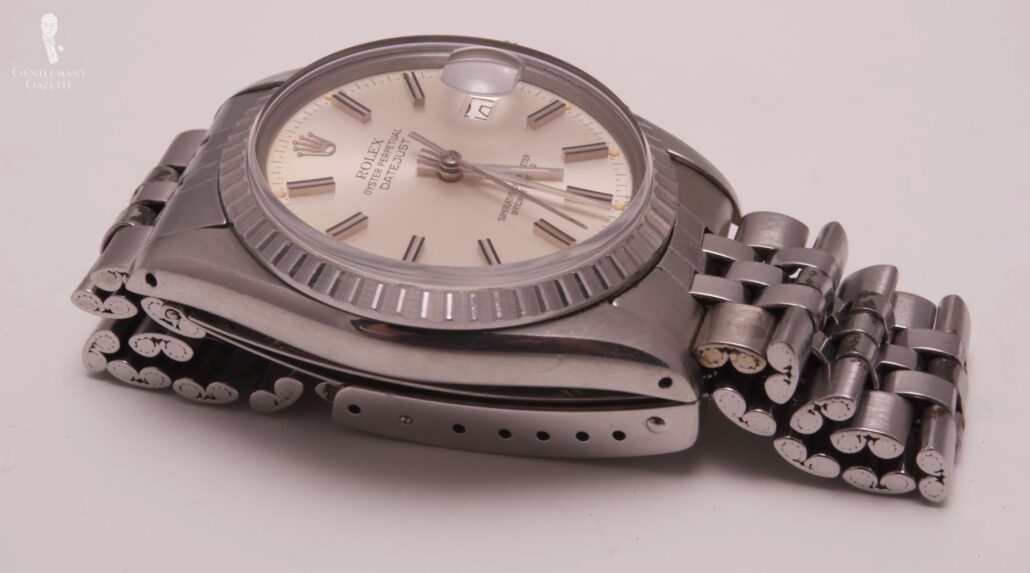
If you like a watch below that price range, don’t look at it as an investment. Look at it as a luxury good, as an accessory, something that you wear and unlike other things, like your suit or your shoes, it just won’t depreciate as much in value or most likely it won’t. Also, you bought a watch that you liked and it didn’t increase in value, you at least get the joy out of looking at it and wearing it and be simply just happy about it.
Naturally, if you just look at the development of the retail price, chances are, they will go up due to inflation and other factors. But just because the retail price goes up, doesn’t mean that the used market street value rises as well. There may be a few exceptions to the rule, a Timex watch or a Max Bill watch from Junghans will likely not get you that big return that you’re hoping for.
![Timex Marlin Reissue Look at it as an accessory or luxury good, that may depreciate over time, but has the potential for appreciation like this Timex Marlin Watch Reissue. [Image Credit: tkvco.com]](https://www.gentlemansgazette.com/wp-content/uploads/2019/12/Timex-Marlin-Reissue-1030x773.jpg)
What if you have money to spare but you don’t want to buy a Rolex because you don’t like the look of it or you just don’t want to be that kind of a person? Well, I think the reason most people are interested in investment watches is because they have a certain affinity to watches.
Reliable Investment Watches
Here are a few watches you can look at, they have shown to be popular for a number of years, prices have increased on a retail level and chances are you should get a good rate even if you sell your used one and you bought it new.
- Navitimer from Breitling
- Chronoswiss Regulator
- Reverso A from Jaeger-LeCoultre
- Omega Chronograph Seamaster Professional
If you have more than $20,000, you could look at these options:
- Lange 1 from A. Lange Und Söhne
- Nautilus from Patek Philippe
- Royal Oak Offshore from Audemars Piguet
- IWC Doppelchronograph Fliegeruhr
(By the way, here’s our guide on how to pronounce watch brands the proper way!)
Conclusion: Are Watches Good Investments?
Well, they’re not a traditional investment vehicle because there’s not an organized buy and sell market. Historically, the biggest price increases came from Patek Philippe watches that were very rare and expensive in the first place. If you can afford the right model of Rolex in stainless steel, chances are, you can wear it, enjoy it and make more money back even if you sell it after years of use. You may even be able to make a profit with other brands but it requires specialized knowledge and it’s a bit more risky.

At the end of the day, I’m a firm believer that investing in yourself pays the highest dividends. That being said, if watches aren’t your thing, well there are many other things you can invest money in and enjoy it such as rings or fountain pens or even clothing. One may argue that they are not an investment because it likely loses money but it just brings you pleasure.
What’s your stance on watches as investment pieces? Have you had success with them? Let us know in the comments!
Outfit Rundown
I’m wearing a relatively lightweight business suit out of a worsted wool with a fine orange or dark red stripe. I’m pairing it with a shirt with a club collar and it is white and gray striped which works well with my suit. It also works well with my watch which is a vintage Reverso watch from the 1930s from Jaeger-LeCoultre and I simply like it, I didn’t buy it as an investment piece. I liked the look of it the rectangular shape, I enjoyed the history around it, and it’s simply something I like and I bought. It’s used in the first place and chances are, if I ever want to sell it, I’ll probably realize what I paid for it but I don’t look at it that way. It’s just something that’s part of my wardrobe and that’s part of me and maybe one day, I’ll hand it down to a child or grandchild.
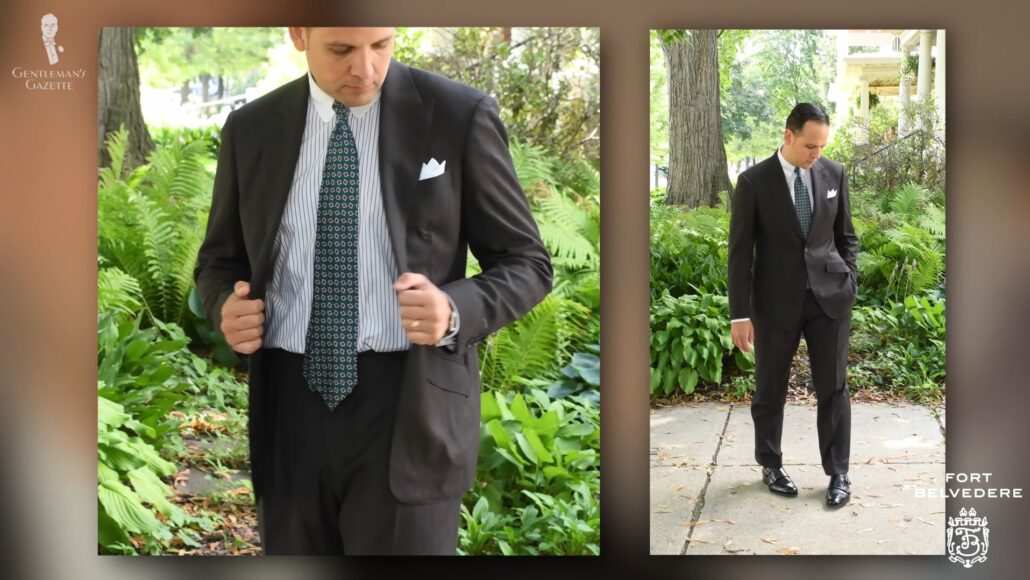
My tie is a mix of woven and printed silk from Fort Belvedere in orange and turquoise which picks up the colors of my suit but provide an interesting contrast. My socks are what we call the two-tone solids in burgundy and white. They have a nice elegant sheen and the color palette slightly changes. Even though you have burgundy and white, you even get shades of gray when you look at them depending on what direction the light is shining on.
I decided to combine it with a pair of monk straps in black with silver buckles because the watch strap is also black and the watch is silver. I like to keep everything harmonious which is why I chose cufflinks with a black onyx ball and a silver look which is actually platinum so it doesn’t tarnish and you can find them in our shop just like the tie, the socks, and the white linen pocket square.
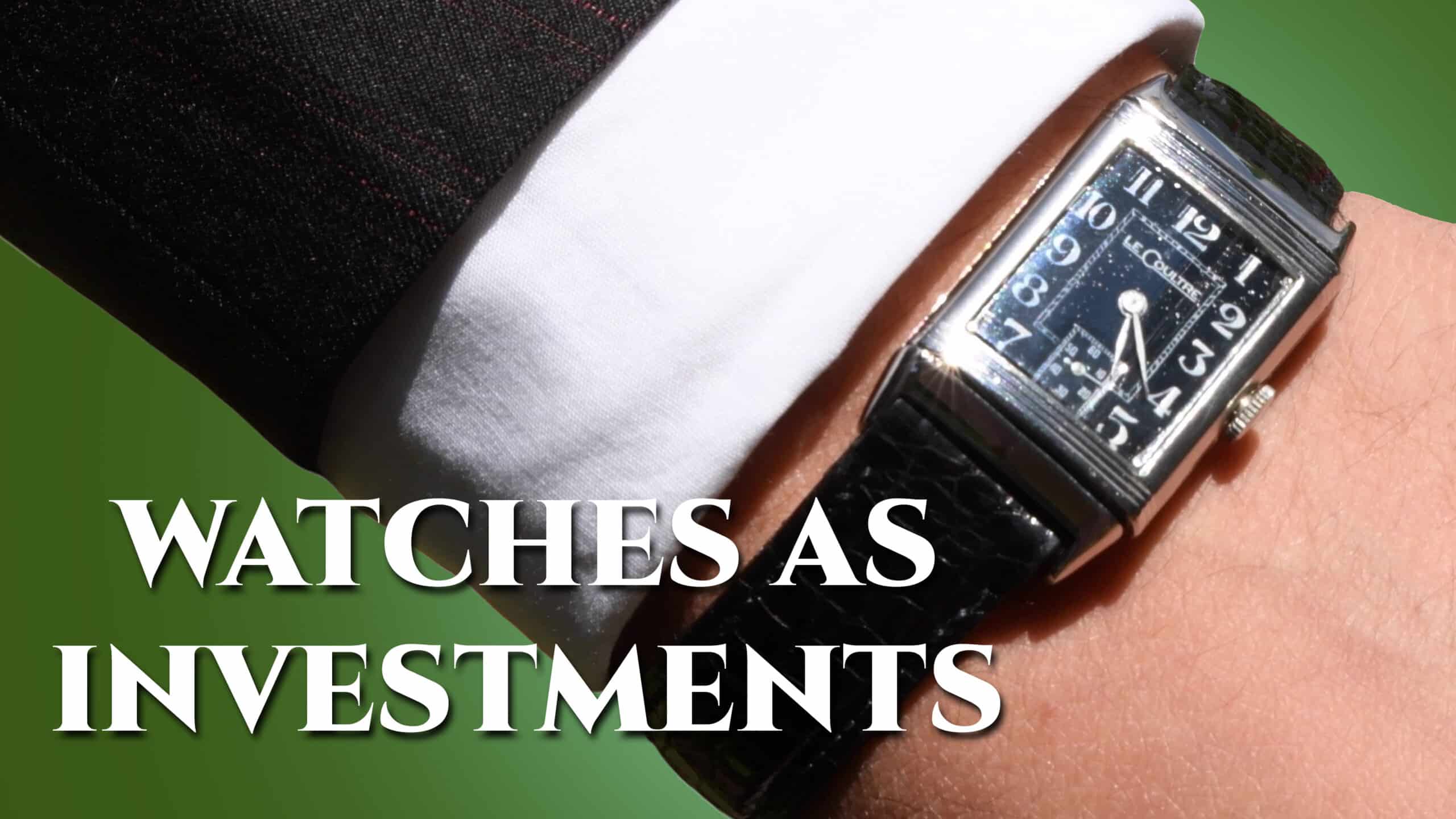

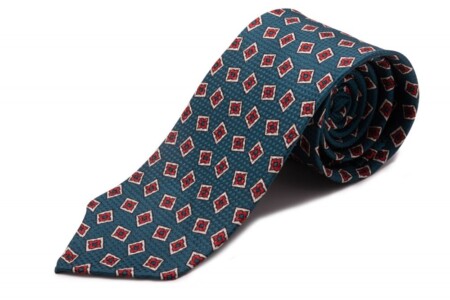
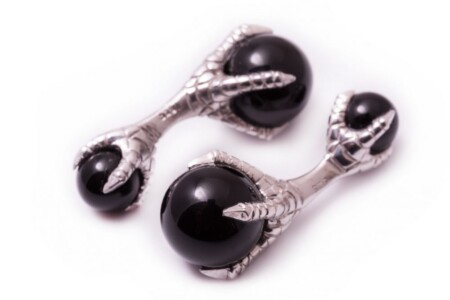
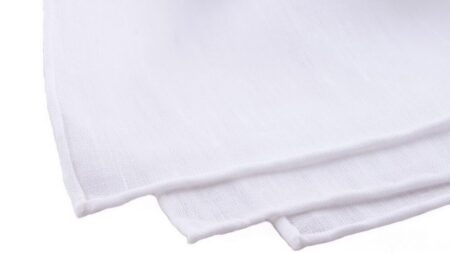
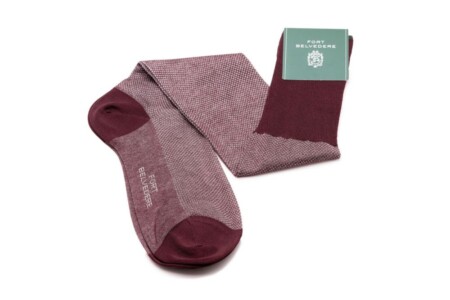
Personally, I consider luxury watches as a high risk future investment. Everything depends on tastes in ten or twenty years, availability of authorized repair centers, and even the future of wearables. Changes are that, in twenty years from now, an expensive watch would be worth little more than the value of the (precious) materials.
To elaborate on that; I do enjoy luxury watches, and have a small collection myself (mainly Omega). I just don’t consider them as investments. Even stainless steel Rolex sports watches carry a high risk in the long term, in my opinion.
Good points here, Johan!
Basically, I agree with you – stainless steel Rolexes are probably the best way to invest in watches, even if you are not that rich. If you are, however, Patek Philippe is the way to go. One thing should always be remembered: fine watches need upkeep, i.e. they will have to be serviced at regular intervals to keep the movement in good condition. With top brands, this can be quite costly (think $500.00 and up for a regular movement and more – maybe much more – if the movement has any complications, e.g. a Chronograph). This should be priced in when you come to the point of selling and calculating what kind of profit you expect. Also, if you have more than one top grade timepiece, consider that it does mechanical watches no good lying around. Yes, there are cases with watch movers, but this would then be another expenditure to make. So, you see, it is not all that simple to invest in watches, although it is very satisfying. P.S.: The Omega Chronograph is the Speedmaster – the Seamaster is something different.
The Seamaster does indeed come in chronograph configurations. As a watchmaker trained in Omega pieces I see them with some frequency, though there are far less chronograph Seamaster models historically than Speedmasters. I would also suggest not using a watch winder. It will certainly not extend the life of the watch and in many cases can be the cause of higher than expected repair costs on seldom worn pieces.
The watch in the photo is a Speedmaster. Also, I am not aware of a Seamaster Professional chronograph, although it may exist. The Speedmaster Professional a.k.a. Moon watch, however, is one of, if not the, most popular and well recognized Omega watch. This alone makes it a good investment, if you can find it at a good price.
I bought my Rolex Submariner 20 years ago because I liked its looks, design, robustness. I enjoy it every day. As a nice by-product, its value has significantly increased (but I am not selling). Maintenance cost was €500 for a full service (once every 10-15 years and cost of my winder was €40. Add insurance at about €100 per year.
I appreciate that my watch keeps its value, but my real joy comes from wearing it. There are much easier ways to invest without getting attached and convert to cash at any time.
Good point, Peter! Thank you for sharing your thoughts!
The best way to make a small fortune investing in watches is to start with a large fortune. Buy and wear the watch you like, and invest in stocks and bonds.
Spot on, Russ! :)
I view the watches in my modest collection as the fashion accessories that they truly are and wear them frequently. I’ve never paid more than $800 for any single watch but I can enjoy each one without worrying that a thief might cut off my hand to take my timepiece when I am out about town.
I agree with “Patrick” a watch for me is just a time piece to wear. If, you want to wear a “rolex” or a “timex” and it makes you feel special, then by all means go ahead and buy one. As for me, i do not need to “show off” in what kind of watch i am wearing. I have a “tank watch” that i like and wear and the cost to keep it in good shape does not cost me alot, and it paires well withever i am wearing. Oh, and if i should loose it or it is stolen, oh well then i will buy another one and thank “god” i have my hand to put it back on to. Not to mention the money i saved in buying it or the cost of service calls or insurance.
If money was no object, Laurent Ferrier or Breguet all the way, for me. As was mentioned, if you want to make any money in this, you have to start with enough of it, so you will have to go heavy. At least with these two, I would have had something that pleased me while I had it. As money is not quite THAT disposable for me, I tap out in basic Grand Seiko territory. I’m with Russ. Look elsewhere for investment, and just buy the watch you like.
Reading through all the previous comments watches as an investment can be a hit or miss depending on how much money you have to spend. For me I like watches, not because of the notion of time, I view them as artistic pieces of craftmanship. If I had the money to start a collection it wouldn’t be as an investment but more like an art collection, and would probably sell in an event of necessity. The watches that Raphael mentioned in the article as the best for investing the Reverso is my favorite and would be the first watch I would buy. I would like anyone’s opinion on buying vintage watches on eBay, for example, some that need a good amount restoring. I am also a fan of Omega and Rolex, and I wouldn’t be flaunting them on social media. I hope everyone is doing great!
Thank you, Fernando, for sharing your wonderful thoughts on this. :)
The watches that are the most likely to go up in value are often the ones that are most commonly faked. This is especially true for Rolex and others like Richard Mille. And fakes these days can be extraordinarily convincing. However, that’s not a good rationale to buy a fake, either. If you do, you’d be supporting an illegal market and likely some pretty abhorrent labor practices. Also, the modern Rolexes that are most likely to go up in value are the ones that are impossible to get. Please don’t think you’re going to walk into a Rolex boutique and say, “I’d like a white-dialed Daytona” then negotiate down and get it for a great deal. They’ll laugh you out of the store. If you want a Daytona, or a Batman GMT, you’d better be prepared for one of a couple options: 1. Invest time and plenty of cash by becoming regular at that dealer, and buy plenty of other Rolexes and other jewelry from them for the right to be on “the list” to get one of the in-demand watches. 2. Be prepared to pay literally double retail price (no, I’m not kidding; Daytona retail: ~$12,000, typical starting secondary market price: ~$24,000+) to buy one on the secondary market and hope you haven’t bought in at the top of the bubble.
Generally, unless you are extremely well-versed in watches and have a lot of experience, looking to watches as an investment is not a good idea. Buy what you love, want to wear and is meaningful to you, and save your investment dollars for real estate or the stock market (or yourself, as mentioned). The vast majority of new watches (Breitling Navitimer included!) depreciate the moment you walk out the door of the boutique.
It looks like you are quite knowledgeable about this topic, Mike. Thanks for sharing your thoughts with us. We couldn’t agree more!
I have a nice Movado. I like Movado best.